Sometimes it just happens. You grab a camera for the first time and it immediately feels right. You turn it on, you take the first shots, you dig randomly into the menu feeling a little bit lost, but it doesn’t matter. Everything just looks great. It took me a few minutes to realise that the new camera I was holding was actually a Leica camera. It seemed so quick and reactive. I wasn’t expecting that. From the outside, the design is pretty standard but the reactiveness, the autofocus speed, the excellent viewfinder and the touch screen almost make you think that you’ve just encountered something new and exciting while, in actual fact, it is technology we’ve already seen on many other mirrorless cameras up until now.
I had the chance to play with the new Leica Q Typ 116 only for a brief time during the launch event but it was enough to understand that this is the first digital camera from Leica that makes 100% sense. Before going any further, I don’t want there to be any misunderstanding: the M series makes perfect sense especially when you consider the history behind it. But from a technological evolution point of view, Leica’s other attempts didn’t convince me that much. The X series is clearly overpriced for what it offers when you consider the competition. The Leica T is a nice attempt at improving the user experience but I admit that I didn’t really miss it after my testing period was over.
The Leica Q has nothing revolutionary but a simple mix of specs and details that seem to blend together seamlessly. And all I can say is: finally!
You get an excellent full frame sensor, a fast Summilux prime lens, one of the best electronic viewfinders (the highest resolution on the market) and while using it, you don’t miss the speed of any other camera. It is that quick. I hope you will forgive what can be interpreted as excessive excitement, but the simple truth is that I can’t wait to receive the Q for an in-depth review.
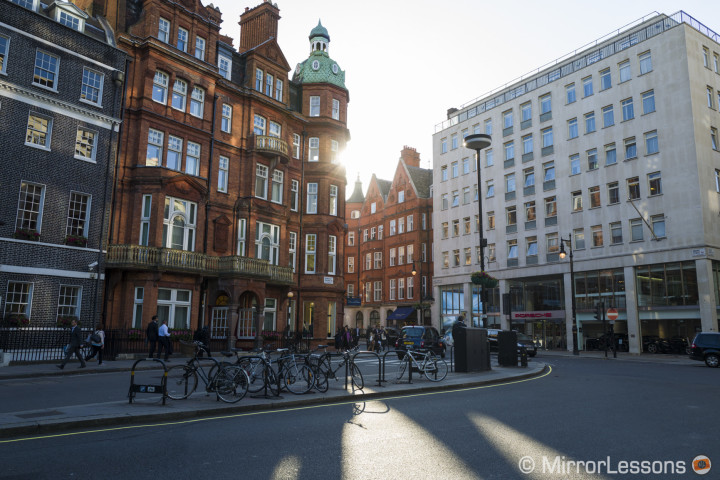
Leica Q (Typ 116) Main Specs
- Sensor: 24 megapixel 35mm full frame CMOS
- Lens system: Fixed 28mm f/1.7 Summilux lens
- Weatherproof: None
- Internal Stabilisation: Yes (optical)
- Autofocus: Contrast detection AF with 49 autofocus areas
- Continuous shooting: 10 fps
- ISO Sensitivity: 100 – 50000 ISO
- Shutter Speeds: 1/2000 to 60 seconds, up to 1/16000s with electronic shutter
- Viewfinder: XGA OLED electronic viewfinder with 3,68k dots, approx. 100% FOV coverage
- LCD Screen: articulated 3″ touch sensitive LCD monitor (1040k dots)
- Movie recording: Full HD or 720p at 60fps/30fps
- Built-in Flash: None
- Extra Features: WiFi
- Dimensions: 130 x 90 x 93mm
- Weight: 640g (including battery and memory card)
Below you can watch our hands-on video.
Design and ease of use
On the outside, the Leica Q is sort of a mix between the X series (the APS-C line) and the M series. The size is slightly smaller than the M240 and feels lighter. The Q is made of magnesium alloy with an external aluminium finish. Its design is streamlined and smooth except for the indent you can find on the rear where your thumb rests. It isn’t a bad design idea and I found it comfortable.
On top, you have the shutter speed dial, the shutter button and on/off switch, the movie recording button and a dial that can serve several purposes. One of them is the exposure compensation. The On/Off switch also lets you choose the Single or Continuous shooting mode. You can also find a standard flash hot-shoe.
On the rear, those who are familiar with M cameras will recognise the button layout. On the right, you have a handy control pad that can be used to move the AF point, among other things. On top, there is a black rounded button that is almost hidden (I didn’t notice it at first) that can be used as a Function button. On the left, you see more classic buttons such as Menu, ISO, Playback and Delete. There is also another Fn button that you can configure with 8 different options such as White Balance, Wifi, etc.
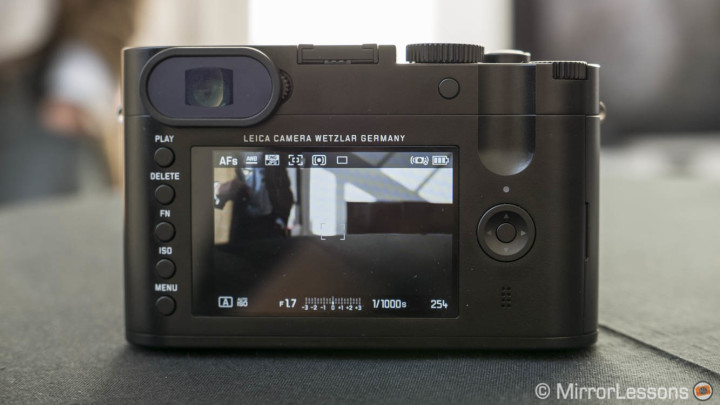
The menu system is similar to the M menu but here you will find a few more settings and options. The SD card is inserted at the bottom where the battery compartment is. The battery is not the same as the M240 – it is slightly smaller with less power (1800mAh vs 1200mAh).
The LCD screen has excellent brightness and resolution and has touch sensitive capabilities. You can use it to select the autofocus point or to set the AF point and take the shot. The viewfinder is also excellent and includes the highest resolution on the market right now. I was also impressed by the refresh rate and the lag time seemed very short as well. I could easily compose even with my glasses on.
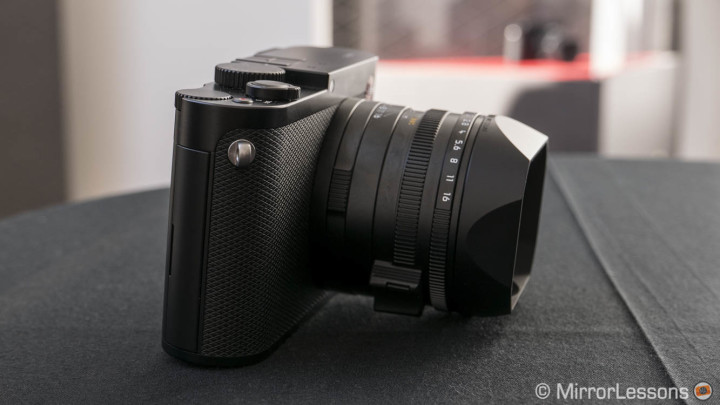
The lens also has an excellent construction with a metal finish that is very similar to Leica M lenses. You have an aperture ring, a distance scale and a focus ring. The latter has a knob at the bottom that can be released to switch to manual focus. The knob has a nice mechanical feeling but I find it a little bit hard to turn. The lens also incorporates a macro ring near the camera body. When you turn it, the distance scale changes with a very nice mechanical switch. In that mode you can only focus from 17cm to 30cm.
Image quality
The Leica Q houses an updated version of the 24 megapixel full frame sensor found in the Leica M and M-P 240. What differs here is that the Q has a higher sensitivity range and can shoot up to 50,000 ISO. The highest value is very noisy and produces some banding, but what is more interesting is that the camera produces very good images up to 3200 ISO. At 6400 ISO, the noise starts to become more visible but conserves a good organic look with no colour noise. 12800 ISO is still usable. After that noise and banding start to become more invasive. Below you can see a few examples via a quick test done in some corridors with poor artificial light. They are JPGs converted from DNG. At the end of the article you will find some Raw files to download.
The 28mm is a Summilux lens with a fast aperture of 1.7. Wide open the sharpness is already pretty good as you can see from the example below.
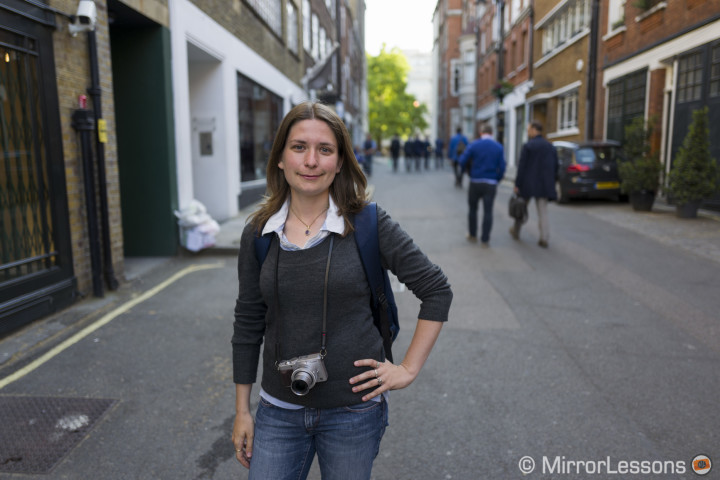
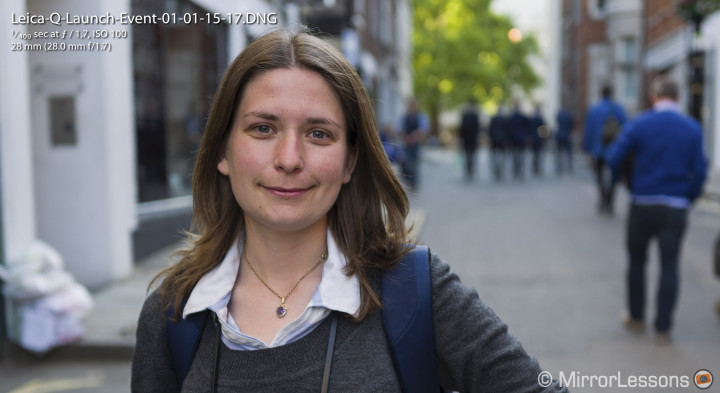
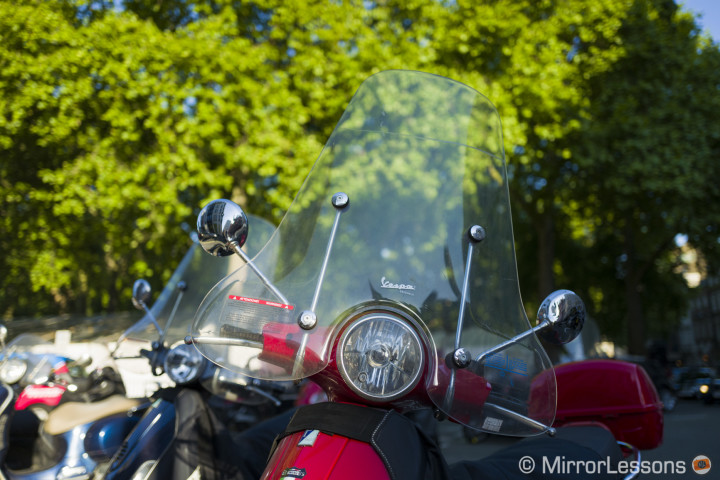
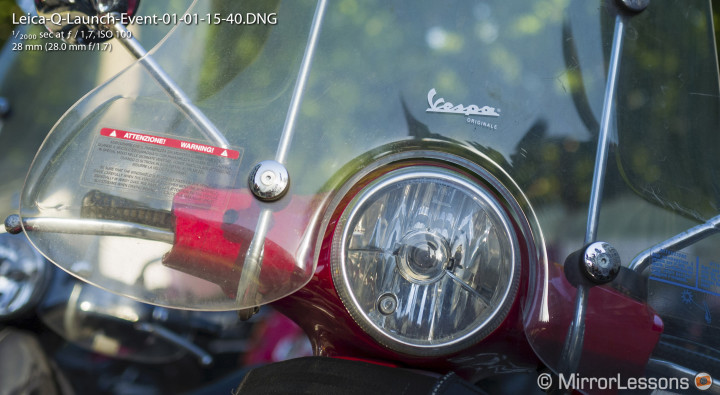
Being a wide angle lens, the best bokeh will be achieved when focusing close. However the capabilities of separating the subject from the background aren’t bad even at further distances.
In macro mode, there is a catch: the minimum aperture available is f/2.8. A similar thing also happens on other Leica cameras such as the X Typ 113 and the Leica T. I am not sure why Leica does such thing but I simply suspect that the lens performance at the fastest aperture and closest distance isn’t that good. I can’t see another reason, and it is a shame. In macro mode, the lens can focus as close as 17cm for a maximum of 30cm. You need to turn the macro ring again to be able to focus to infinity.
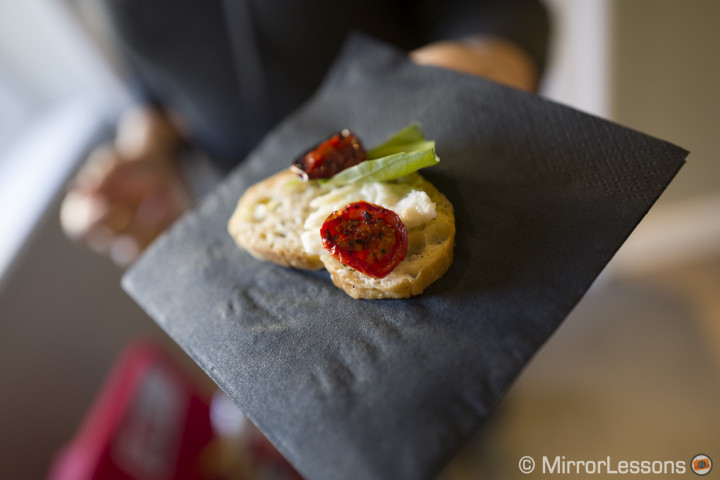
The DNG Raw files of the Q seem really good. I can’t tell without a proper comparison if it looks as good or even better than the Leica M. The only thing I noticed is a lack of precision regarding WB. The RAW files contain unusually high kelvin number in order to be more accurate. Below you can see a few more shots that show you the dynamic range capabilities as well as the excellent flare resistance of the 28mm.
Another curiosity is that the camera includes a digital zoom mode: you can choose between 35mm or 50mm and the camera will crop according to the selected angle of view. What is nice however is that the live view doesn’t change but instead shows you four bright lines that rangefinder users will immediately be familiar with, as they are the same in the M optical finder. So while shooting in crop mode, you can see what happens around your frame, which is one of the main reasons photographers like rangefinder cameras. It is a simple digital crop, so it is nothing extraordinary per se’ but the way Leica designed it is definitely more interesting.
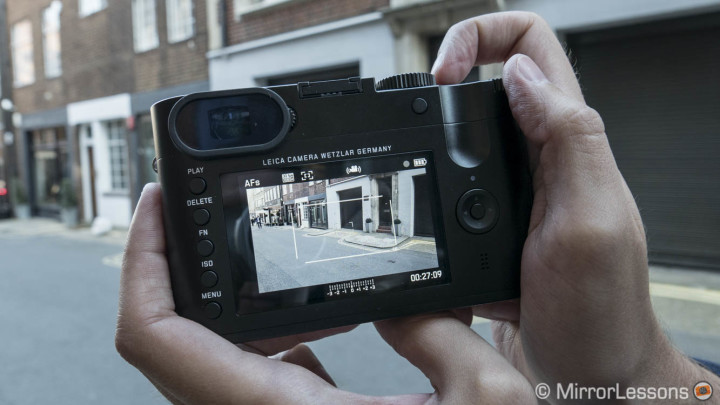
Below you can see an example that compares the 28mm mode to the other two. Of course the Raw files keep their full size. When imported into Lightroom, they are automatically cropped but you can of course reset them. The quality isn’t bad even with the 50mm crop, which gives you a 15 megapixel image.
Of course the Leica Q has a fixed focal length so the main reason you might want this camera is for the 28mm.
Many street photographers like this focal length and I suspect that is one of the reasons Leica chose it instead of the equally popular 35mm. Perhaps it is also a way of differentiating this product from its only real competitor, the Sony RX1 and RX1r with their Zeiss Sonnar 35mm f/2 lens. Personally I don’t dislike the 28mm, as it is a versatile lens that allows you to capture different things.
Autofocus and performance
This is where the Leica Q really impressed me. The autofocus seems really fast and accurate. In fact, I only landed up with one shot out of focus when using the macro mode because I was beyond the minimum focussing distance. Otherwise it always nailed the shot. The AF system is contrast detection only and has 49 areas. A few times it didn’t lock when for example I was focusing on a completely black door on the street where the lack of contrast was too much for the camera to handle. Otherwise, it was fast both outdoors and indoors, with buildings and people. I was also surprised to see that the AF was always accurate and sharp with faces and people moving around the room.

This new autofocus system has nothing in common with the one found the Leica T or X cameras. It is way better.
Leica implemented some of the touch features you can find on the Leica T. Concerning autofocus, it is actually an improvement over the T. When using the touch screen, I found the same reactiveness and speed as when I pre-focused with the shutter button. The only thing I noticed is that when you activate the touch AF feature, the shutter button won’t focus anymore when half-pressed. So when switching to the EVF, you have to deactivate the touch AF function first unless there is an option in the menu I didn’t notice.
While this is not a sports camera by any means, I was curious to see how good the new AF was by quickly tracking Heather running towards me. The Leica Q can shoot at a burst of 10fps which is another great improvement. Below is an example: not perfect but I wouldn’t have expected such a result from this camera. The buffer is also excellent even with Raw files.
Leica (finally!) seems capable of endowing its cameras with excellent performance.
The 28mm lens includes optical stabilisation and Leica claims that it gives you a 2.5 stop advantage. I didn’t push it to the extreme during the limited time I had with the camera but it seems to work well. Given the relatively wide focal length and the good grip and balance, I am sure that it is possible to go slower than 1/10s.
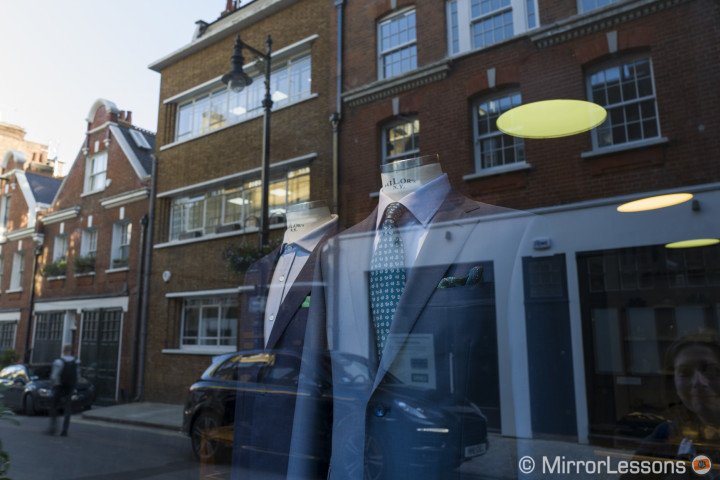
Another nice addition is the electronic shutter. The Q has a mechanical leaf shutter that is interesting for its discreet sound, as well as for high speed flash sync. The fastest shutter speed is 1/2000s but if you need more, the camera automatically switches to the electronic shutter and can shoot as fast as 1/16000s. Here again we don’t have anything new but it is nice that Leica seems to have thought about everything (or almost everything) this time.
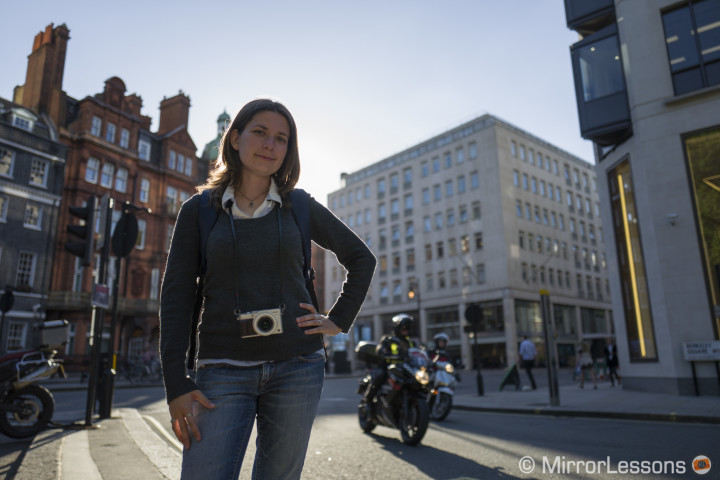
The Leica Q also has WiFi capabilities and a new mobile app designed for the camera. This is one of the only features I didn’t try.
Conclusion
First impressions can be misleading because it is impossible to judge a camera in one hour. I admit I wasn’t particularly excited while traveling to London so I was surprised that I enjoyed it so much. Perhaps it is the enthusiast photographer/camera nerd that resides in me who sometimes takes over the more reasonable and balanced writer.
The point is that Leica seems to have finally designed a modern product that is right in every way. The Q is a compact full frame camera with a fast prime lens and a great built-in electronic viewfinder. The camera is fast in every way from the moment you power it on to the AF capabilities. It is nothing surprising or revolutionary but it just feels right. We can see it as a Mini M or perhaps the most affordable full frame camera from Leica. It costs almost half the price of a M240 and you don’t have to pay the extra money for a lens or external viewfinder. I should also add that it was about time to see an upgrade from the X series with a full frame sensor.
The Leica Q is a step in the right direction.
Speaking about price, it still remains expensive. At $4250/€3995/£2900, it is an expensive compact camera, no doubt about it. Is it worth the price? Well, I’ll need more time to assess that but as you can see, my first impressions are more than positive. The only real competitor is the Sony RX1/RX1r, which is less expensive by about $1000. The lens is also different (Zeiss 35mm f/2) but there is no built-in viewfinder, the AF is slower and the external EVF for the camera is not very cheap. So The Leica Q is expensive but in the end not that much more than the Sony alternative.
Now let me finish with some provocation: what about a Q system with interchangeable lenses? Come on Leica, you came this far, just take that extra step!
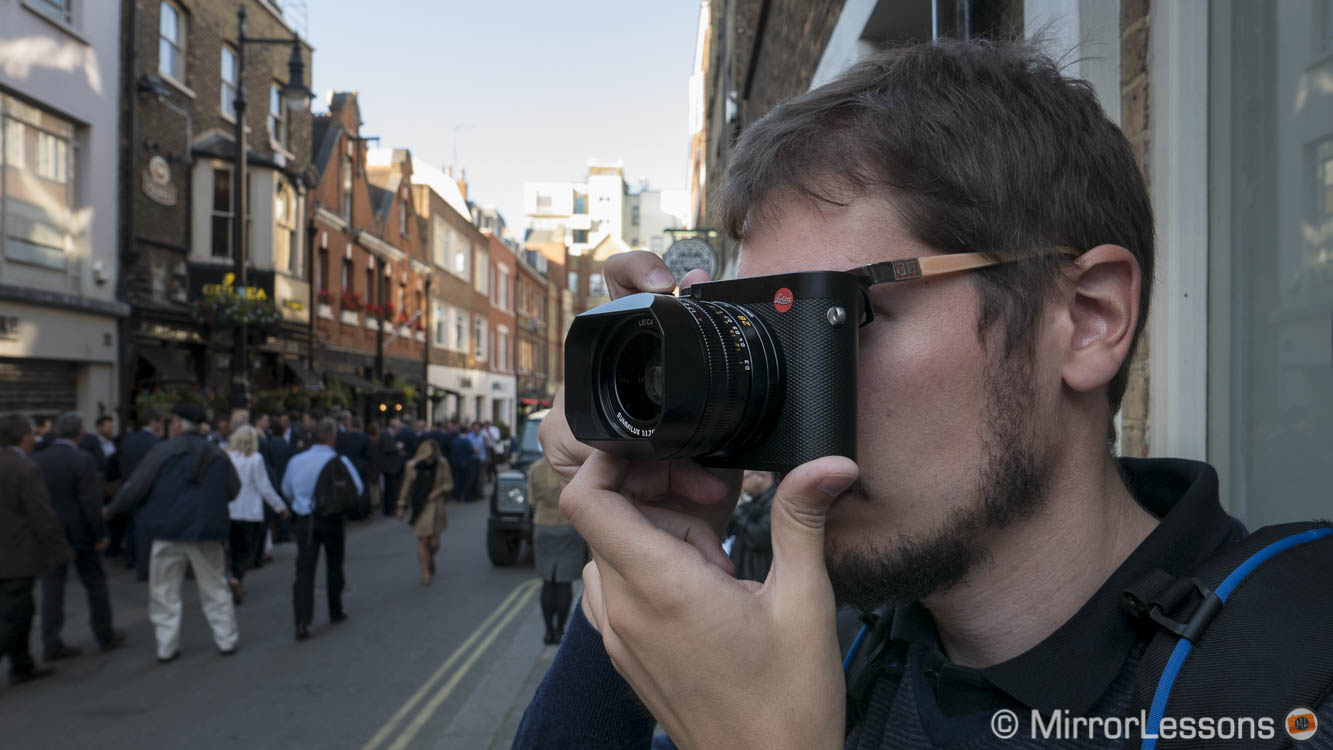
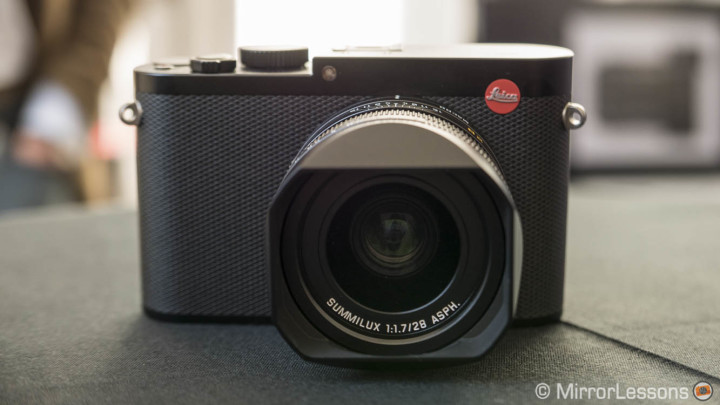
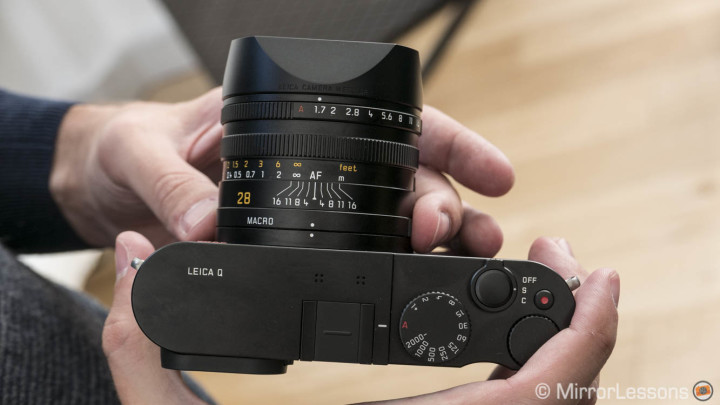
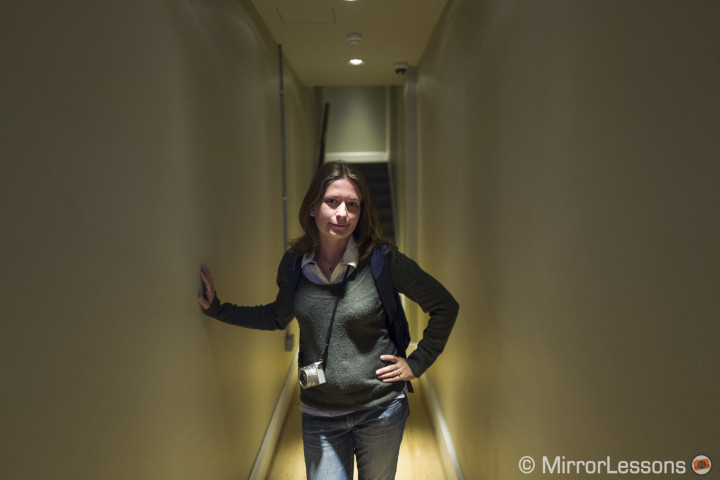
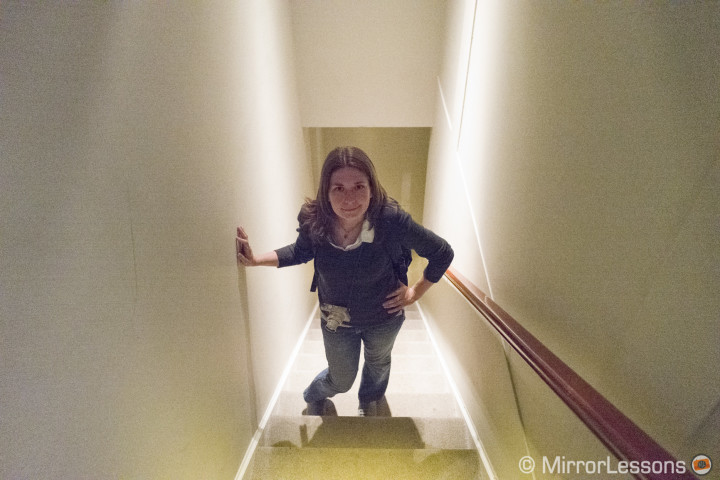
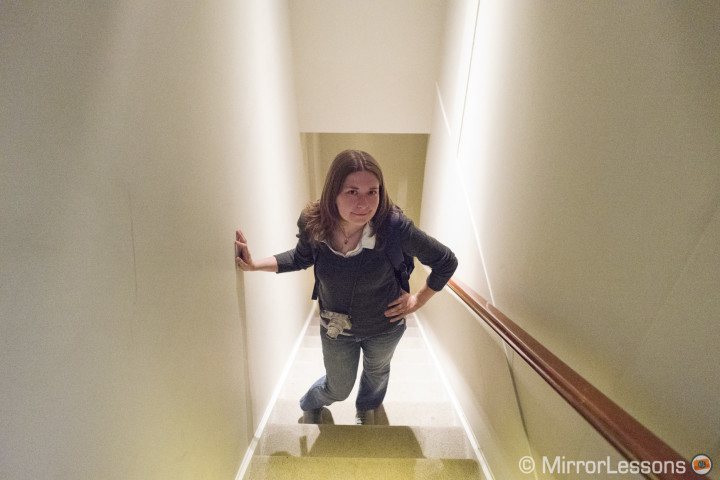
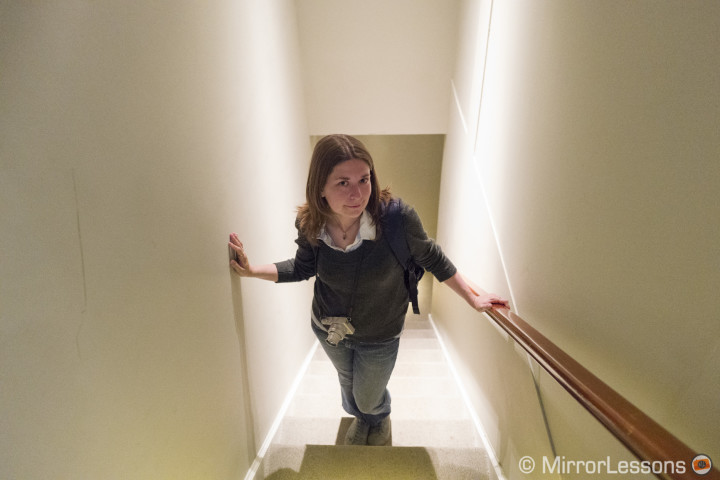
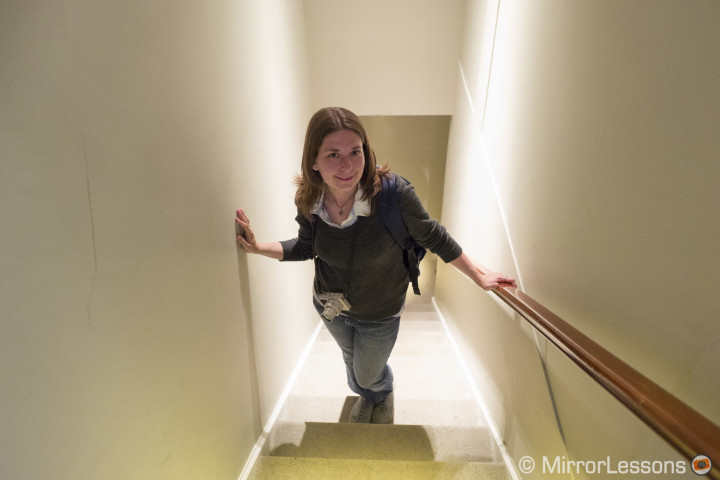
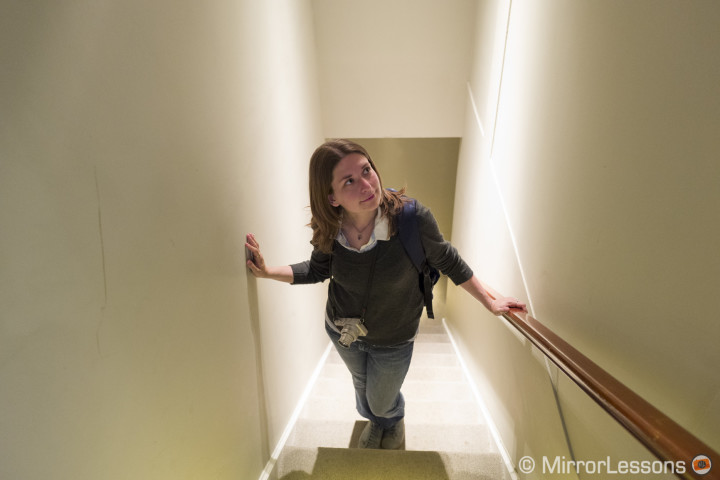
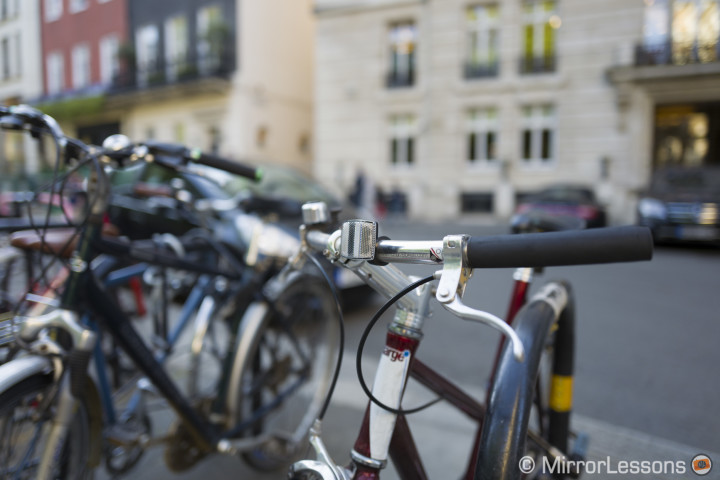
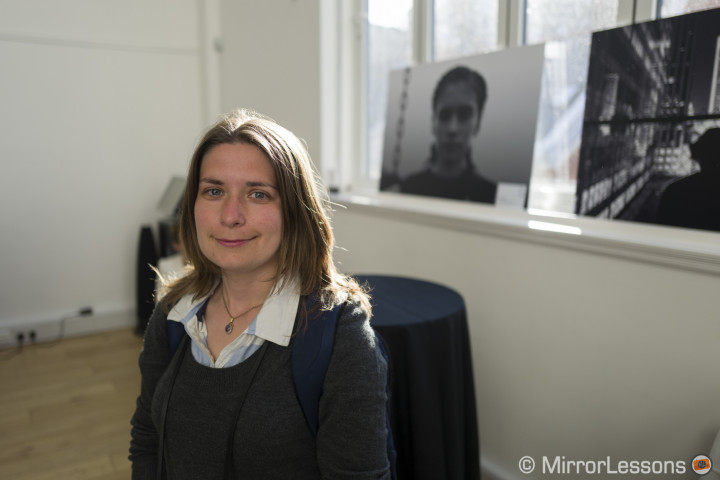
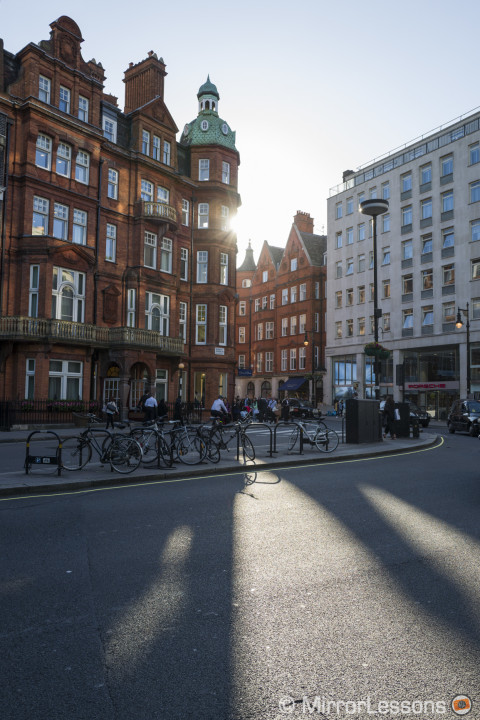
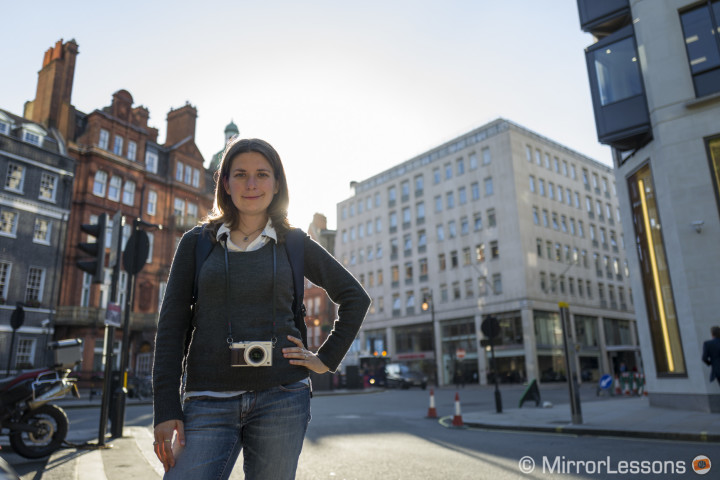
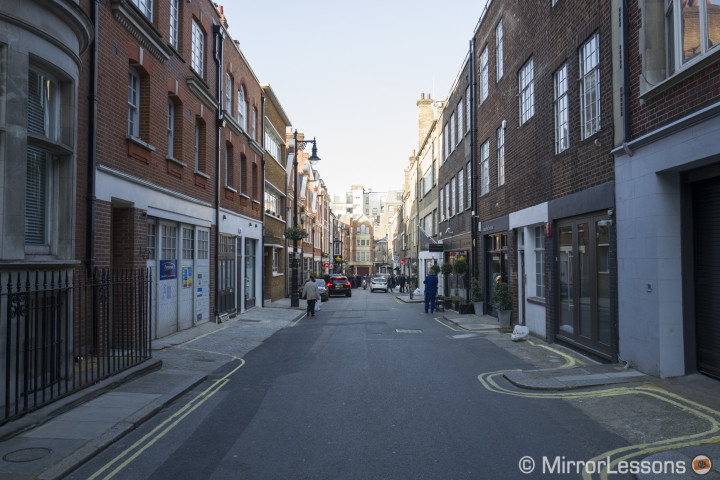
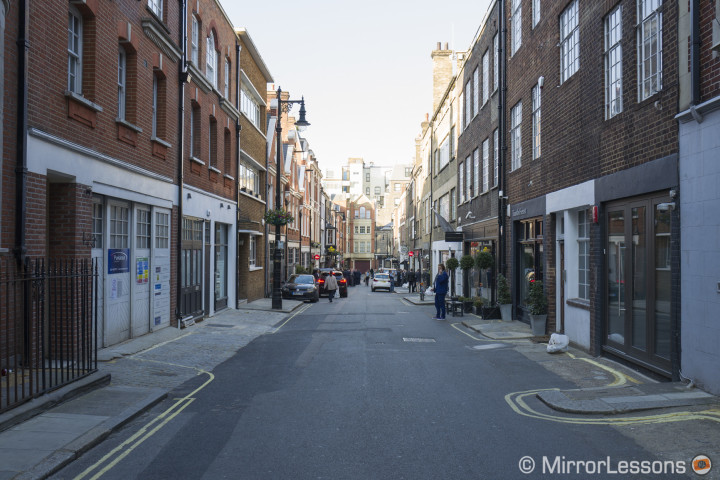
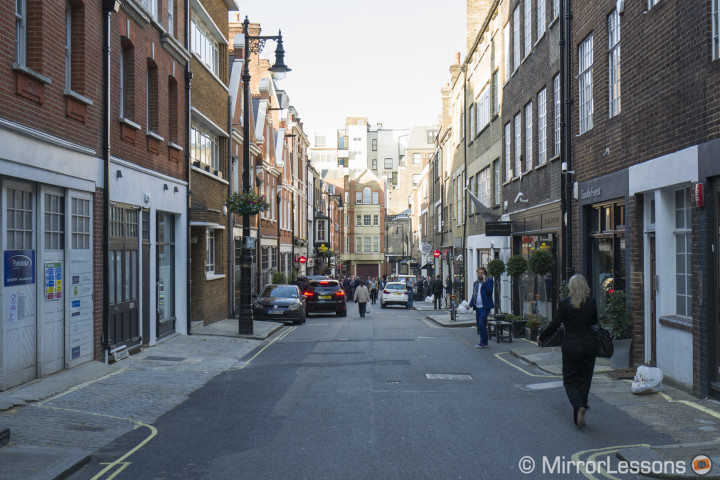
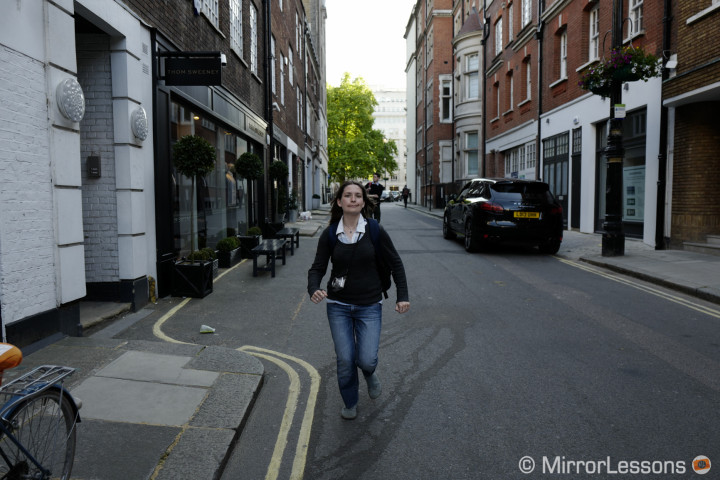
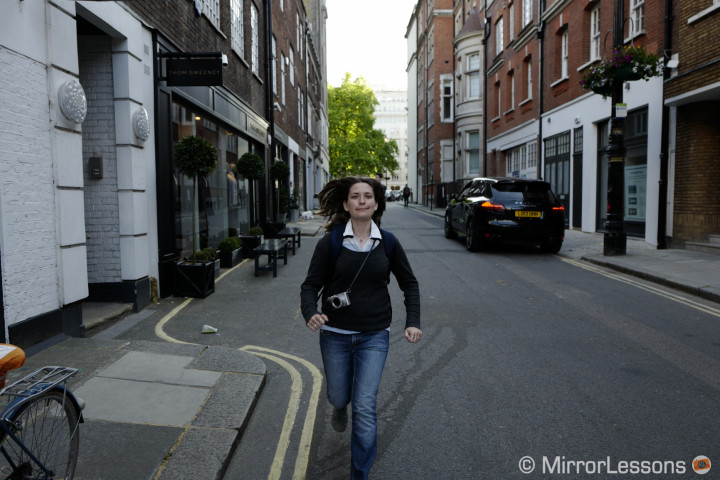
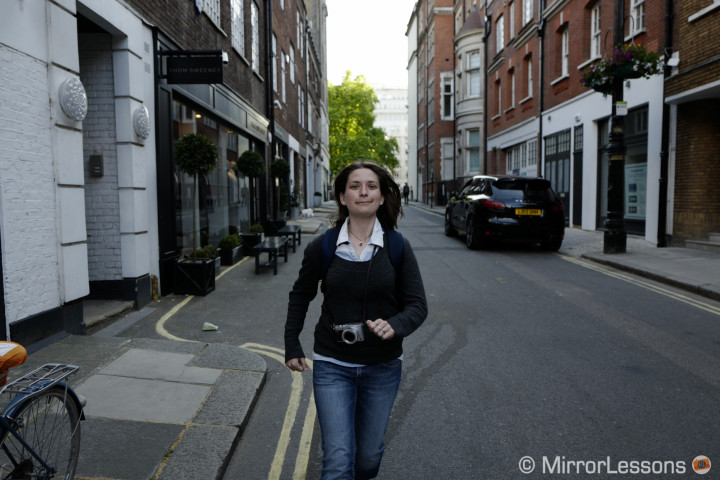
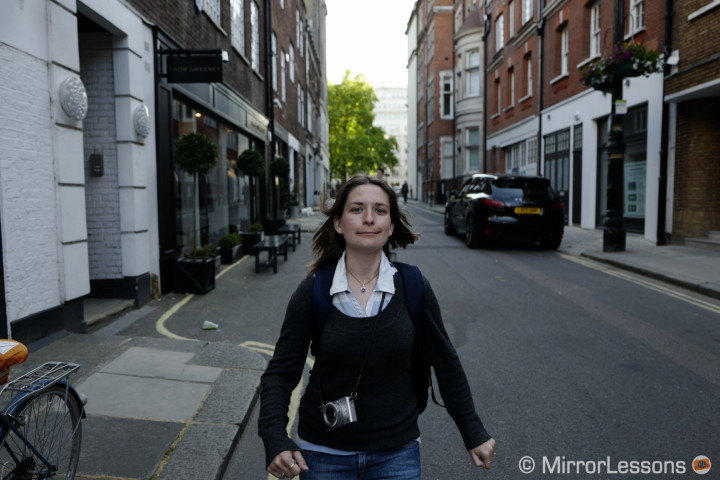
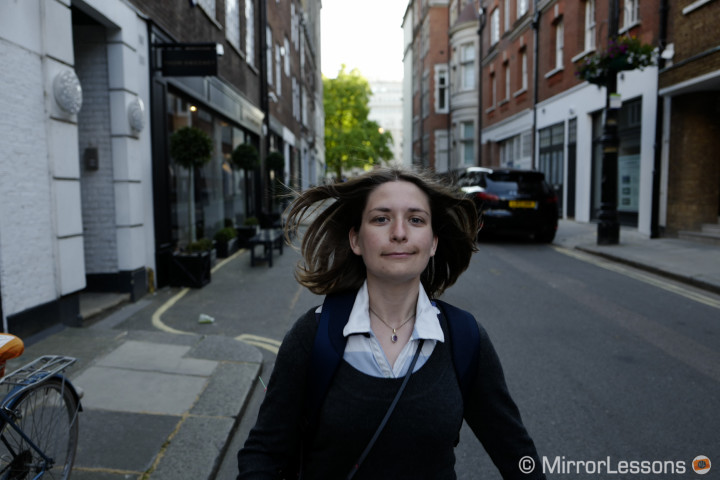
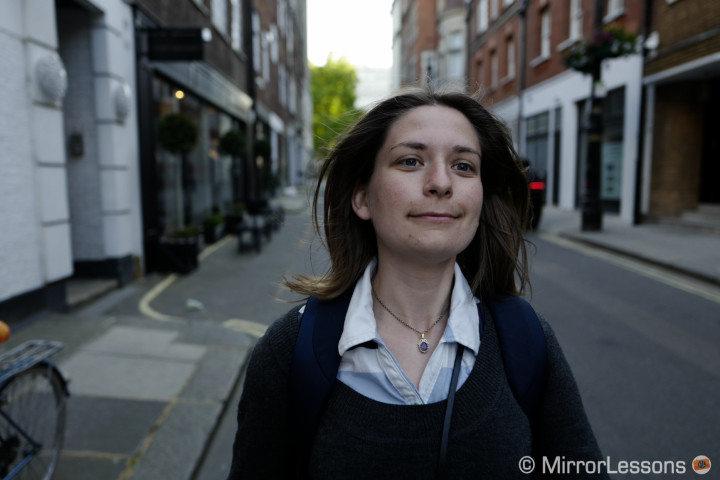
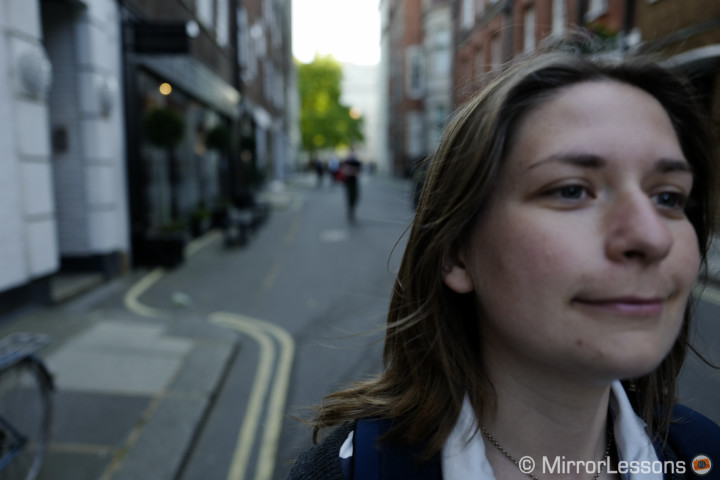
Yes it is quite good I agree. I think that it can definitely work for ambient portraits.
Well that is very little distorted, actually I’m very impressed if you think that it is a wide angle lens. 🙂
I haven’t see any relevant distortion however it can be critical for portraits because of the short focal length. So it depends on what kind of portraits and what is your tolerance for distortion on people’s faces. Here is an example with myself:
https://www.mirrorlessons.com/wp-content/uploads/2015/06/Leica-Q-Mat-1.jpg
Hi Mathieu, does this lens have distortion? Is it good for portrait? I read that the camera corrects it automatically. However, I find the bokeh excellent and very creamy for a wide angle lens.
It’s notoriously difficult to assess Leica and sales. I read the article at lavidaleica and there’s a lot of speculation there with not a lot of facts to back it up. I read an interview with Leica, I think at Amateur Photographer though I can’t be sure, that the X series was their best selling line. Which is actually quite understandable. Small, simple, the Leica red dot, less expensive than the M series.
There is also the question of who buys Leica? From things that I’ve read, including Jonathan Slack and from contacts I have in the far east, Leica sells to an entirely different audience than those of us who spend our time in this small corner of the internet anyway. And the upmarket shops of Dubai and Shanghai being places that will feature Leica, but no other cameras, being an obvious example. The majority of Leica owners and users, I suspect will be less likely to take any notice of what Steve Huff says than other brand users, if indeed they even know who he is. Plus 50% of the world’s luxury goods market is apparently now in the far east. Add in that Leicas majority shareholder is an Austrian billionaire and you have a somewhat different scenario.
On the T specifically I’m in the process of writing a somewhat ‘robust’ article on some of the reviewing and comments about this camera. Several of which are simply wrong and in some cases downright lies. I have my own ideas as to why this might be and I’ll be outlining them in the piece. But some of the reviews of a camera that has several class leading features are shoddy at best and almost criminally inept at times. And while I would guess it’s sales figures are probably not setting the world on fire (and in the light of some of those reviews it’s not hard to see why) there are no signs that Leica are about to sell their stocks off cheaply. With my turnaround in cameras I’ve learned to spot the signs and Leica have a definite timetable that shows if something is on the way out. Interestingly that turned up before Christmas with a £500 discount on the M (Typ 240) so don’t be surprised if a new M is ready for announcement. (Or have you got one to review already!!!)
On the Q, it’s going to be a great success, but it is an easy move by Leica. Make it look like an M and all the ‘recreational photographers’ will get all hot and bothered, because most of them don’t have a clue anyway and it conforms to all the cliched non-creative stereotyping that so bedevils the photographic internet. I’m buying one. but the T is still very much part of my future plans. And if it does disappear, Leica now have an APS-C lens mount and some superb lenses and I doubt they are going to just write them off.
To me all of this is about as useful as the ‘DSLR’s are dead’ agenda. Interesting that the last set of cameras sales figures I saw showed camera sales increasing as they do every year in spring and DSLR’s increasing more than mirrorless. Like this and with Leica, a lot of this is wishful thinking and somewhat mired in finance. For example Dpreview are always sniping at Leica and guess what Amazon don’t sell the brand!! Gosh, what a coincidence.
In the end however we’ll see what we see. All I know is that the T system I have does a great job for me and I’m looking forward to the Q arriving. And when it does I’ll be doing my usual long term, real use ‘reviewing’ of that camera. And it’s those experiences that convince me of the merits or otherwise of a camera system.
I don’t know honestly, but La Vida Leica is often right.
Hi Mehran:
– the sync speed is 1/2000s max with the leaf shutter. The camera switch automatically to the electronic shutter (up to 1/16000s) if higher speed is needed for example when shooting in Aperture priority.
– Highest ISO is 50.000 for both RAW and JPG.
Thanks for this Mathieu! Informative review. A few quick questions:
– The sync speed is 1/2000s, is that right? (Your piece implies it, but just wanted to be sure.)
– What is the highest ISO value available in RAW format?
cheers
Mehran
Not quite sure about the prediction, as Leica have always reported good sales for their X series. I wouldn’t be surprised if the T didn’t continue though. Shame.
Yes an interchangeable lens system would kill the M, unless they keep the Monochrom, the M-P + the various collection versions. I think that if the Q is successful, they might bring more versions with different focal length. And rumours say already that the T could not live long.
http://lavidaleica.com/content/leica-xt-headed-discontinuation
i was hoping you would get your hands on one. Nice to have a review that doesn’t make me either cringe or raise my blood pressure!! As you are probably aware, or will have guessed my pre-order is in and I’ll be starting one of my long terms reviews / user experiences when my Q arrives. I do still love the T and will continue using it, but the larger M type form is very appealing.
I think an interchangeable lens version would compete against the M system, so I can’t see it happening, unless Leica really do want to reshape their market. Plus IS with a new mount and set of lenses? This gives them the opportunity to do things that a CSC wouldn’t allow. Plus I read somewhere that other lens models might be on the cards. 35mm? 50mm? Bit like Sigma. Not ideal, but at least there is none of the M system dust spot horror!!